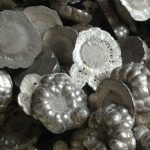Notice: Undefined index: sith_hide_share in /www/sites/alloy.wiki/index/wp-content/themes/likegoogle/single.php on line 32
Deprecated: get_settings is deprecated since version 2.1.0! Use get_option() instead. in /www/sites/alloy.wiki/index/wp-includes/functions.php on line 4862
The medical titanium bars can be forged by using the closed die forging method. The closed die forging must strictly limit the volume of the original blank, which complicates the material preparation process. Whether closed die forging is adopted, both profit and technological feasibility should be considered. Then only heat treatment and machining of the final blank.

The forging temperature and deformation degree are the basic factors that determine the microstructure and properties of the alloy. The heat treatment of titanium rods is different from that of steel, and die forging is usually used to create a shape and size close to the scrap. It does not determine the structure of the alloy. Therefore, the specification of the final working step of titanium rod plays an important role.
It is necessary to make the overall deformation of the blank not less than 30% of the deformation temperature not exceed the phase transition temperature. In order to obtain high strength and plasticity of the titanium rod at the same time, the temperature and deformation degree should be evenly distributed in the entire deformation of the blank as far as possible.
Guest contributors are welcome at the Alloy Wiki.It is a weekly wiki and guide on alloy information and processing technology, while also about the vast array of opportunities that are present in manufacturing. Our team of writers consists of a Machining Material Supplier / Machinist / Tool and Die Maker, a Biomedical Engineer / Product Development Engineer, a Job Development Coordinator / Adjunct Professor, and a President and CEO of a manufacturing facility.
Link to this article:How to improve the yield of medical titanium bars?
Reprint Statement: If there are no special instructions, all articles on this site are original. Please indicate the source for reprinting:Alloy Wiki,thanks!^^


